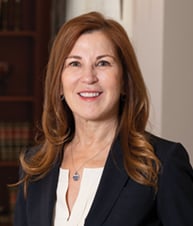Last week, the U.S. Supreme Court heard oral arguments in the case AMG Capital Management LLC v. FTC, teeing up a decision that could invalidate the Federal Trade Commission’s (FTC) favored route to obtain monetary relief for consumer protection cases—Section 13(b) of the FTC Act.
Specifically, the Court is considering whether Section 13(b) of the FTC Act allows the FTC to pursue monetary relief, such as restitution, despite only explicitly authorizing “injunction[s].” In July 2020, the Court granted certiorari to address a split in the circuit courts in two consolidated cases: AMG Capital Management (Ninth Circuit) and Credit Bureau Center (Seventh Circuit). In November, the Court vacated the grant of certiorari in Credit Bureau Center, leaving only the AMG case to be decided by the Court.
The History of Section 13(b)
Section 5 of the FTC Act bars “unfair methods of competition,” as well as “unfair or deceptive acts or practices” that affect business or trade. Originally, the FTC could only enforce Section 5 through administrative proceedings, issuing an order directing the violator to stop its illegal conduct. The FTC could not go to court, nor could it recover the money that the business pocketed through its unlawful acts.
This changed in the 1970s when Congress expanded the FTC’s power to enforce the FTC Act through several sweeping amendments. First, in 1973, Congress passed Section 13(b) of the Act, which gave the FTC the power to go to a district court to obtain a permanent injunction to enjoin any person who “is violating or about to violate” Section 5. Just two years later in 1975, Congress passed Section 19 of the Act, giving the FTC explicit authority to seek monetary relief, including “rescission … the refund of money or return of property, [and] the payment of damages” for violation of FTC administrative orders.
On their face, these amendments limited the FTC’s ability to seek monetary relief to Section 19 alone. Monetary relief under that section involves a multistep process, which requires the agency to first obtain an administrative cease-and-desist order. Then monetary relief is only available if that order is thereafter violated and it is proven that a “reasonable person” would understand the defendant’s conduct was “dishonest or fraudulent.”
Given the significant hurdles of Section 19, the FTC turned to Section 13(b) to seek monetary relief in federal district court. It did so by arguing that “permanent injunctions” under Section 13(b) should be interpreted broadly to include other types of equitable relief, including monetary relief. The result was significant: for the past 30 years courts in every circuit have accepted this argument, and the FTC has used Section 13(b) almost exclusively as its route to seek swift monetary relief for past violations of the FTC Act.
Has the Supreme Court Already Decided?
Last week’s oral argument did not take place in a vacuum. The Supreme Court has made several moves over the past year that may foretell its coming decision in AMG.
First is the Court’s decision in Liu v. SEC last year. There, the Court assessed the SEC’s ability to seek disgorgement and, in doing so, limited the availability of the remedy. A summary of that case is found here, but relevant is the Court’s analysis of the categories of relief that were traditionally available in courts of equity. The Court analyzed whether a statute providing for “equitable relief”—a broader term than Section 13(b)’s “injunction”—allowed the SEC to pursue disgorgement of funds. The Court found in the affirmative there, but did not connect “injunctions” as a vehicle for courts of equity to “strip wrongdoers of their ill-gotten gains.” Tying disgorgement to the broader term “equitable relief” cuts against the FTC’s broad interpretation of including monetary relief within the narrower term “permanent injunction.”
Second, last fall the Supreme Court vacated the grant of certiorari in Credit Bureau Center, a Seventh Circuit decision that overturned earlier Seventh Circuit precedent allowing for monetary relief under Section 13(b). At the time of vacating certiorari, the Supreme Court had already consolidated Credit Bureau with AMG to address both cases at once. The timing of the Court’s decision to vacate the grant of certiorari in Credit Bureau is interesting, coming two weeks after the confirmation of Justice Amy Coney Barrett, who sat on the Seventh Circuit when Credit Bureau was decided. While Justice Barrett was not on the panel that wrote the decision, she did vote against granting an en banc rehearing of the case. Removing Credit Bureau from the court’s consideration of Section 13(b) avoided any potential ethical concerns of Justice Barrett reviewing a case she could be perceived to have participated in. And, if vacating review of Credit Bureau has any implication on the merits of AMG, it is that Justice Barrett is more than likely going to find in favor of AMG’s narrow interpretation of Section 13(b), which would confirm Credit Bureau’s holding.
Justices’ Questions Suggest It Will Interpret Section 13(b) Narrowly
In his questions to AMG on why the Court should deviate from long-standing case law interpreting Section 13(b), Chief Justice John Roberts acknowledged that that there would be more “leeway” to an expansive interpretation of the provision if the Court’s analysis is based on the environment in which Congress passed it, which he described as a more “freewheeling” approach that was not necessarily confined to the specific language of the statute, so much as looking at “what Congress had in mind” when drafting it. He noted that today, the Court uses a “disciplined approach” adhering to plain language of the statute, which he viewed as “more suited [to the Court’s] role under the Constitution.”
The Justices then asked AMG why the Court should deviate from long-standing case law and precedent? In particular, the Justices asked what they were to do with two Supreme Court cases, Porter v. Warner Holding Co., 328 U.S. 395 (1946), and Mitchell v. Robert DeMario Jewelry Inc., 361 U.S. 288 (1960), that involved similar provisions in other statutes and were used to validate the FTC’s interpretation of Section 13(b). Even outside Supreme Court precedent on related statutes, Justice Stephen Breyer opined that the law isn’t perfect. Even if the determination that Section 13(b) included equitable relief was a mistake, it has been around for 50 years and is a uniform interpretation. Justice Breyer asked AMG whether too much time has passed and if the Court should consider Section 13(b)’s limited language water under the bridge. This sentiment was echoed by Justice Brett Kavanaugh, who asked if there was a point to leave well enough alone, due to the importance of stability in the law.
On balance, however, the Court seemed more skeptical of the FTC’s position. When questioning the FTC, the Justices expressed a concern with the FTC’s interpretation of Section 13(b) effectively rendering the protections established in Section 19 superfluous. Justice Elena Kagan found this to be the strongest argument against the FTC. Justice Neil Gorsuch expressed a similar concern, stating that those protections the FTC established to occur before an individual’s money can be taken away will be rendered superfluous by the FTC’s interpretation of Section 13(b). Justice Kavanagh drew upon his own experience in the Executive Branch, noting the tendency for agencies to push the boundaries of vague statutory text to reach an end goal. But doing so poses significant concerns about the separation of powers, Justice Kavanagh warned. Why, he asked, is the answer not for the Court to limit powers to the text of the statute and for the FTC to seek new authorization from Congress?
The Justices’ questions also suggested an emphasis on considering history when evaluating the FTC’s position. Justice Breyer described in length the history behind limiting the FTC’s power, in part due to the business community’s original apprehension of the newly created agency. Businesses feared that the FTC would abuse the powers Congress gave it—a fear, Justice Breyer suggested, that might be realized by the FTC’s broad interpretation of Section 13(b) today. Similarly, Justice Sonia Sotomayor stated that legislative history is not unimportant and questioned what to make of the fact that nothing in the legislative history suggests Congress understood Section 13(b) to authorize monetary relief. Finally, Justice Samuel Alito questioned the FTC on an article written by a former litigation attorney in the FTC’s Office of General Counsel from 1976 to 1990, which suggested that Section 13(b) was not originally imagined to become an important part of the FTC’s consumer protection program when it was enacted.
Conclusion and Takeaway
Ultimately, the FTC seems poised to lose its favored vehicle for monetary relief and, along with it, the leverage of threatening significant damages in federal court when entering into settlement negotiations during investigations:
- First, the Court’s decision in Liu foreshadows a predisposition to limiting the FTC’s interpretation of Section 13(b)’s injunctive relief.
- Second, Chief Justice Roberts’s acknowledgment that the modern trend of the Court to stick to the plain meaning of the statute, combined with Justice Breyer’s summary of Congress’s intent of purposefully limiting the remedies available to the agency and Justice Kavanagh’s concern about separation of powers, shows a high hurdle the FTC must jump in order to validate its interpretation of Section 13(b).
- Third, while striking monetary relief from Section 13(b) seems to allow wrongdoers the ability to keep money earned from unlawful conduct, the FTC does have another, albeit from its perspective a less desirable, route to monetary remedies: administrative proceedings under Section 19, which only provide monetary relief for violations after an order is entered. Nothing, however, prevents the FTC from requesting Congress to explicitly provide it with the powers it has sought through Section 13(b). In fact, the FTC has already started this dialogue but will have to fight for oxygen as a new Administration begins this week with its own priorities to consider.



